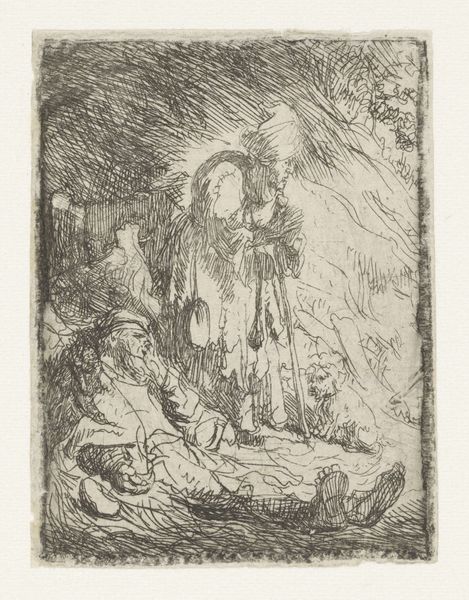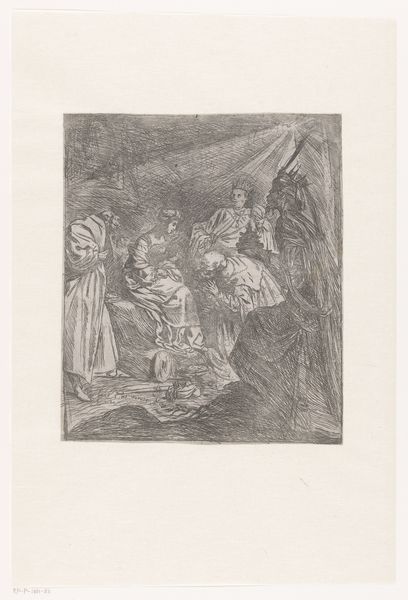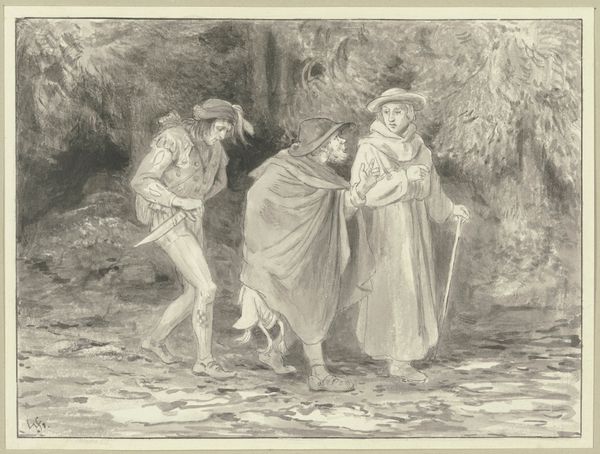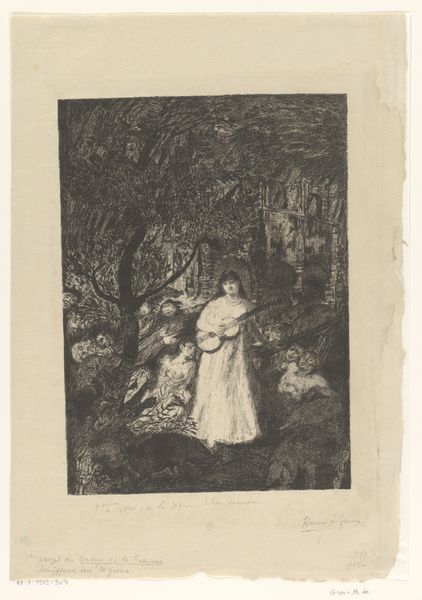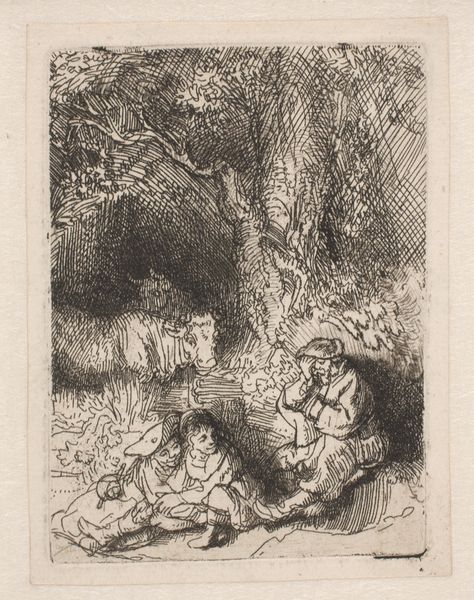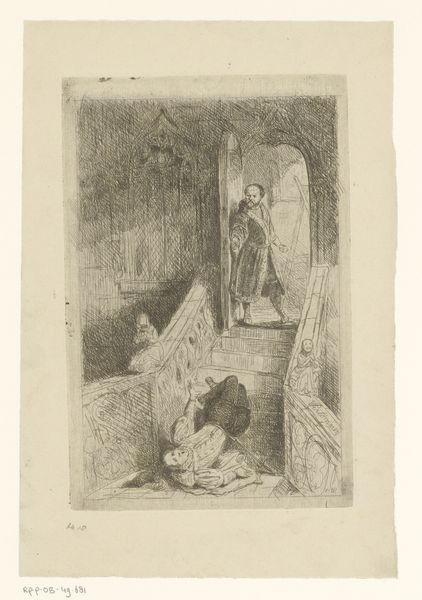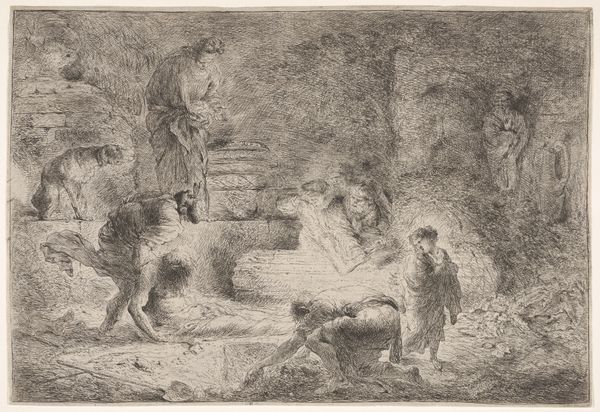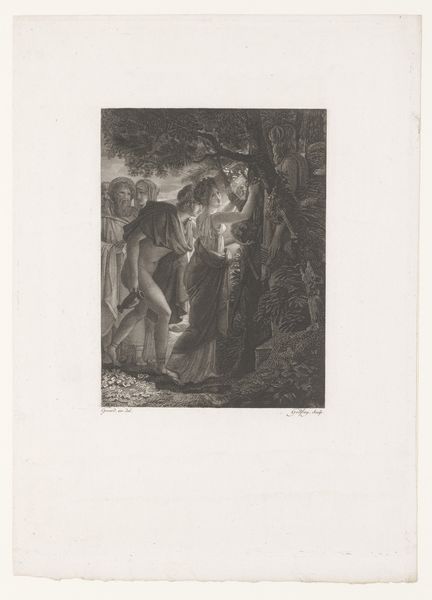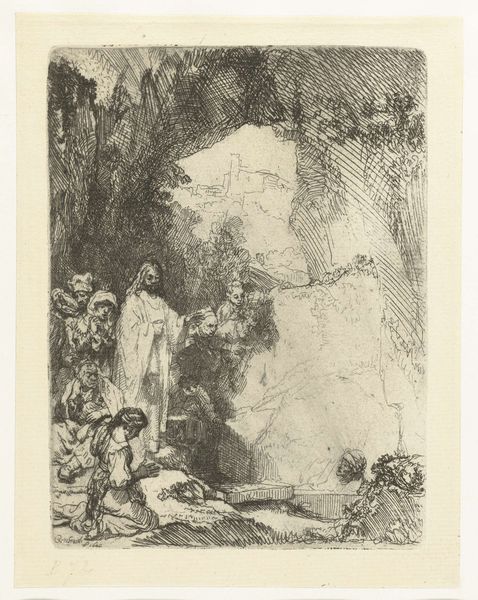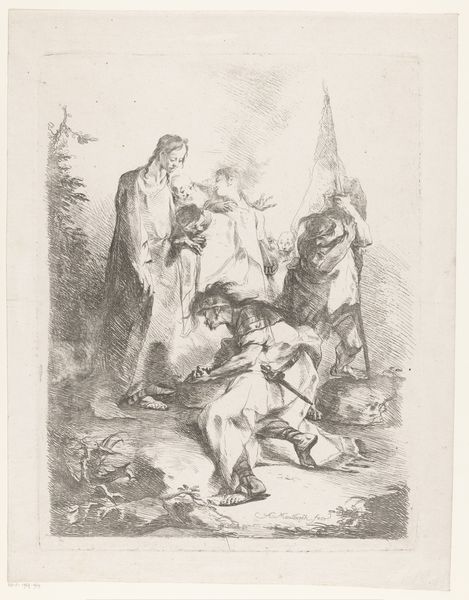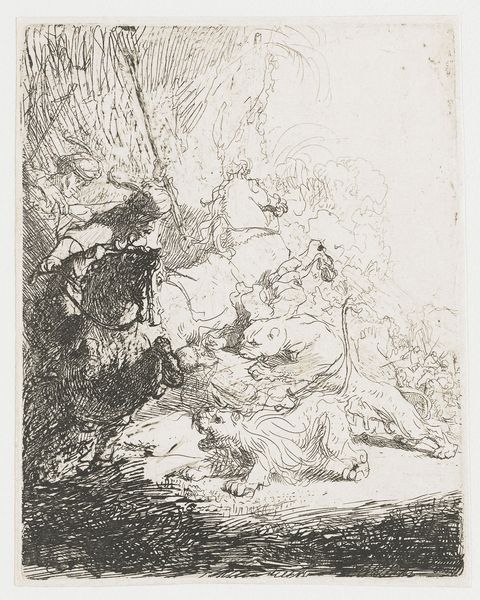
drawing, ink, pencil
#
portrait
#
pencil drawn
#
drawing
#
pencil sketch
#
charcoal drawing
#
ink
#
pencil drawing
#
romanticism
#
pencil
#
genre-painting
Dimensions: height 207 mm, width 150 mm
Copyright: Rijks Museum: Open Domain
Jean-François Portaels etched "Vijf mannen uit het Midden-Oosten." The turban, a headdress prominently worn by several figures, immediately draws our attention, acting as a potent symbol of the men's cultural and religious identity. Turbans have been worn across various cultures throughout history, from the Middle East to India, each style carrying unique significance. Reflect on the Arnolfini Portrait by Jan van Eyck, where the turban is a signifier of wealth and status during the Renaissance. Yet, in Portaels's etching, the turbans signify something else. Here, they evoke an aura of cultural otherness, inviting viewers to reflect on themes of identity. The psychological weight of such symbols cannot be ignored. The turban might trigger a cascade of cultural memories and associations, shaped by personal experiences and collective narratives. These associations may have undergone multiple shifts in meaning, influenced by sociopolitical contexts. The image thus engages the subconscious, a silent dialogue between the artwork and the viewer's own cultural imprints. The turban is a cultural artifact that has not followed a linear trajectory. It embodies a cyclical progression, surfacing time and again, constantly acquiring new meanings, resonating in diverse cultural landscapes.
Comments
No comments
Be the first to comment and join the conversation on the ultimate creative platform.
